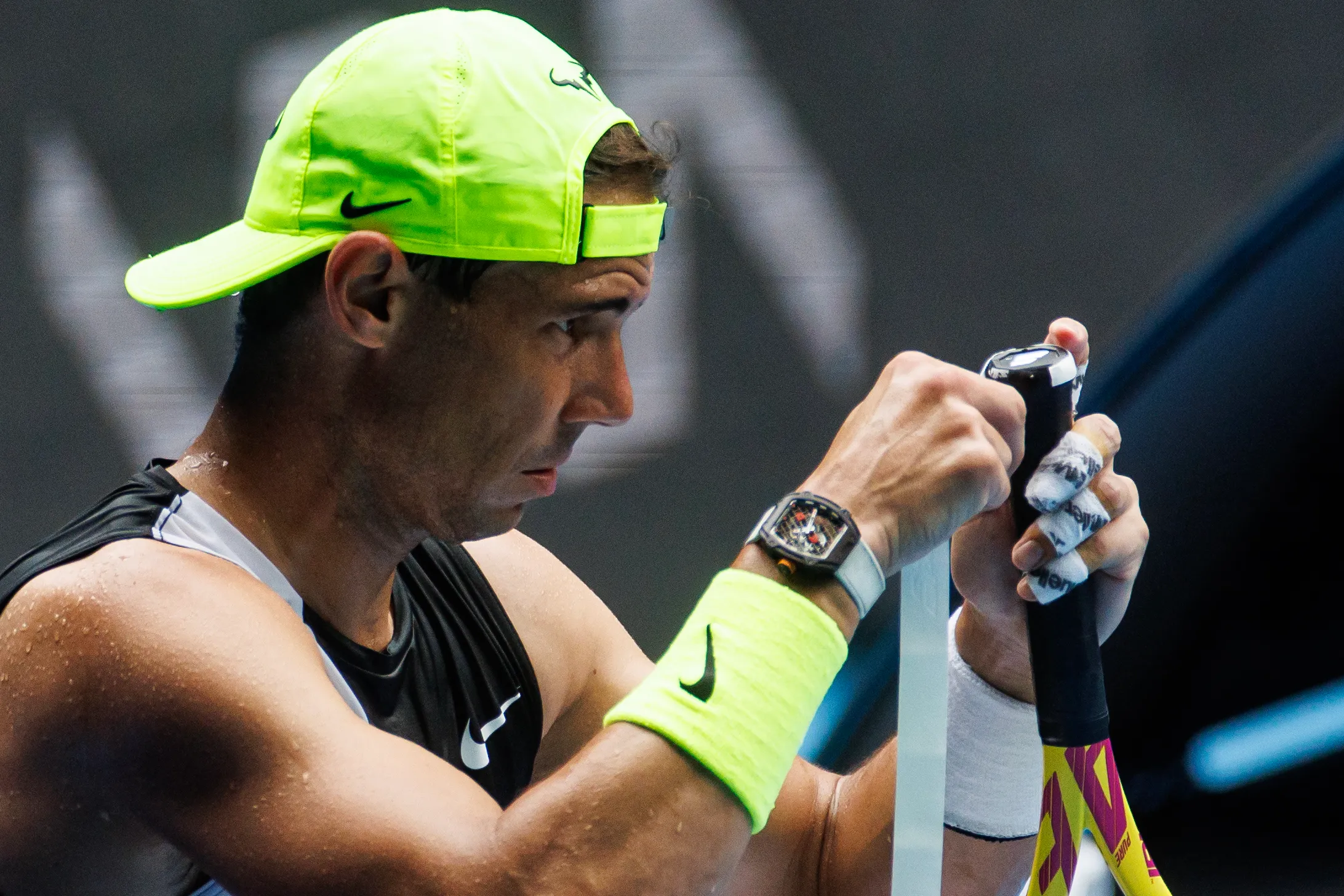Tennis Grip Sizes: A Modern Guide For Players
TennisWednesday, 02 August 2023 at 14:00
Updated at Monday, 14 August 2023 at 01:09

A common question brought to tennis forums asks which grip size is right for them. This is a very valid question, particularly for those new, or returning to tennis.
When searching online, there are many dated guides which instruct readers that the correct grip size requires a finger’s width of extra space around circumference of the handle when holding the tennis racket.
While it is true some space is desirable for a comfortable hold, often dated advice such as this leads to players using a grip size that is far too large for today’s tennis. To understand the reasons for this change in trend, we need to understand the change undergone in tennis since the relevancy of these old guidelines.
In the past, when rackets were heavier and simpler, tennis technique was also simpler. Namely, flatter grips were used to hit flatter shots, with the racket head moving straight through the ball, in a “swinging gate” style of motion (think Jimmy Connors and John McEnroe).
Read also
Larger grip sizes were therefore more common, as it helped players maintain stability as they hit straight through the ball, with little topspin employed to hit the tight sweet spot. Not to mention, the unforgiving nature of old rackets and leather grips meant a larger grip size prevented tennis elbow strains from gripping the racket too tight.
By contrast, modern tennis – particularly groundstrokes – employs a lot more complexity, so a large grip size can be rather restricting. It’s a bit like trying to use a pen with the diameter of a rolling pin: There’s no dexterity.
The modern game requires much greater topspin than ever before, in order to hit reasonable power and retain some margin for error. Therefore, grip sizes have reduced slightly as the game modernised, allowing players to bring the racket face “around” the ball more effectively, to hit greater topspin. Grand Slam Champions Rafael Nadal and Dominic Thiem, for example, both make use of a grip size L2 (4 1⁄4”) to hit more extreme levels of topspin.
Read also
The rackets of today are also a lot lighter and more forgiving, providing the user far increased stability and comfort over the equipment made available in the past. Not to mention the tacky overgrips commonplace today impart much more friction between hand and racket, therefore the racket handle does not need to be squeezed anywhere near as tight as the old, bare leather grips, keeping tennis elbow strains at bay. In fact, should a player seek advice for dealing with tennis elbow, the first thing I recommend doing is exchange the grips on their racket for new ones.
In short, grip sizes L2 and L3 (4 1⁄4” and 4 3⁄8”) will suit most players. There are occasions where a larger L4 grip size (4 1⁄2”) is needed, such as for people suffering muscular or joint pain in their hand, or those with particularly large hands, but this is on the rare side.
Grip size L1 (4 1⁄8”) can also prove useful for junior players in the Under-12s, and some in the Under-14s category. However, this grip size will likely prove too small for older juniors and adult players to have an enjoyable tennis experience.
As with most tennis equipment, I always recommend trying before buying. In particular with grip sizes, I recommend picking up a friend’s racket that has the desired grip size, to see how it feels before purchasing a racket of your own.
Read also
Loading











